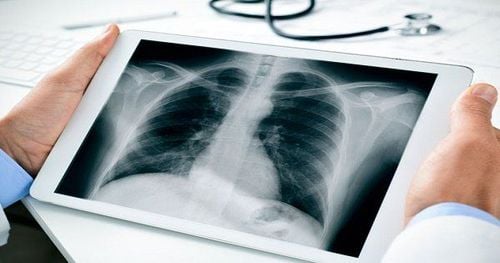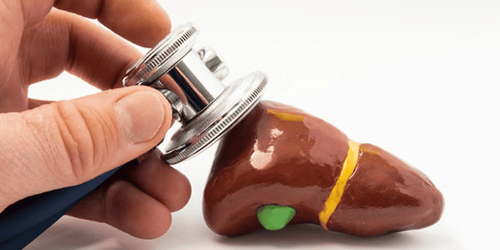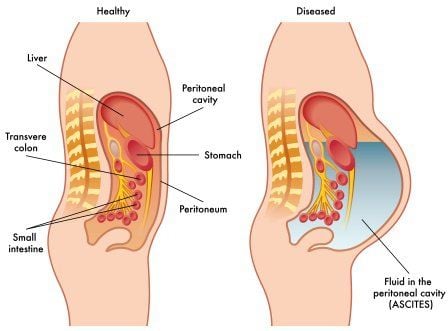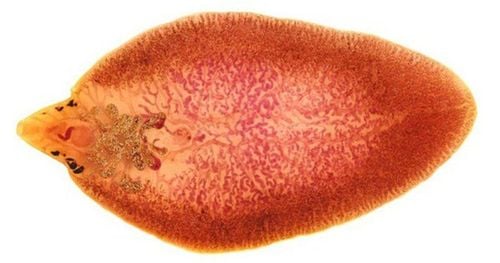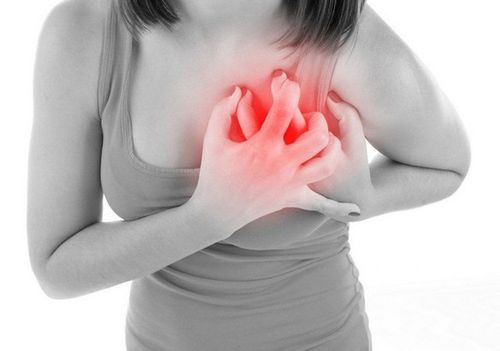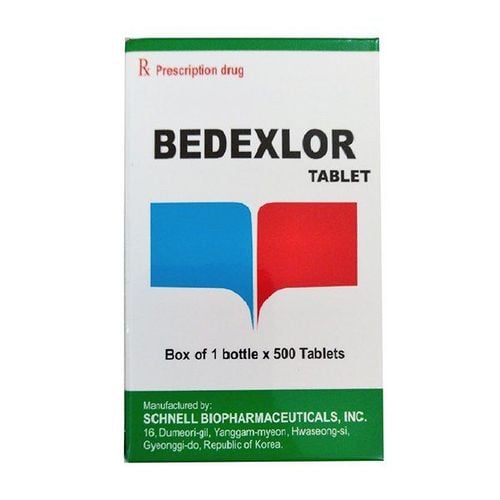This is an automatically translated article.
Posted by Master, Doctor Le Thi Minh Huong - Emergency Medicine Doctor - Department of Resuscitation - Emergency - Vinmec Nha Trang International General Hospital
Aspiration pleural fluid is aimed at aspirating fluid, blood, pus, and gas that are abundant in the pleural cavity, causing acute respiratory failure. This is a difficult procedure, requiring the performer to have professional skills, and the place to perform must have modern technical facilities. In addition, to ensure that the emergency pleural puncture steps to limit complications, the patient needs to follow the doctor's instructions.
1. Outline of emergency pleural puncture
Aspiration pleural fluid is aimed at aspirating fluid, blood, pus, and gas that are abundant in the pleural cavity, causing acute respiratory failure in order to limit the cause of death.
Accordingly, pleural aspiration is indicated in the following cases:
Pneumothorax on a lung lesion: alveolar dilatation, pulmonary fibrosis, pulmonary tuberculosis, pulmonary staphylococci,... Hemothorax . Purulent pleural effusion. Rapid recurrence of pleural effusion or hemothorax (to induce adhesions).
2. Prepare for emergency thoracentesis drainage
2.1. Patient
New chest X-ray (same day as puncture).
Ultrasound marks the puncture site. Explain to the patient and encourage the patient to cooperate with the operator. 30 minutes before the aspiration, Atropin 1/4mg x 1-2 syringes of anesthetic can be injected if the patient is nervous or at risk of a lot of anxiety. Patient position: lying and sitting. With the lying position, the patient will lie on his back with his body straight, head high, body tilted towards the healthy lung, hand on the side on which the drain is placed is raised above the head.
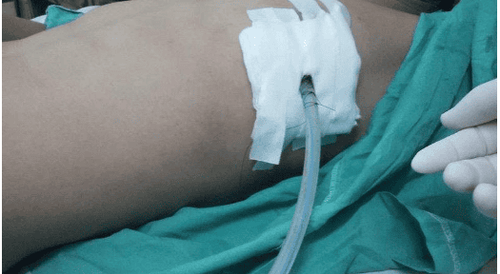
With the sitting position, the patient sits on a recliner, facing the shoulder of the chair, arms folded in front of him, resting on the shoulder of the chair, chest resting on the shoulder of the chair (with a soft pillow).
Accordingly, the equipment to be prepared is a 25G large needle or a needle with a drainage catheter attached.
Trắc nghiệm: Làm thế nào để có một lá phổi khỏe mạnh?
Để nhận biết phổi của bạn có thật sự khỏe mạnh hay không và làm cách nào để có một lá phổi khỏe mạnh, bạn có thể thực hiện bài trắc nghiệm sau đây.3. Executor
Prepare for surgery:
Wear a hat, wear a mask. Hand wash soap. Hand sanitizer with alcohol. Wear a surgical gown. Wear sterile gloves
Trắc nghiệm: Làm thế nào để có một lá phổi khỏe mạnh?
Để nhận biết phổi của bạn có thật sự khỏe mạnh hay không và làm cách nào để có một lá phổi khỏe mạnh, bạn có thể thực hiện bài trắc nghiệm sau đây.4. Medical records
Explain the technique to the patient, the patient's family and sign the agreement to agree to the technique, the record of procedure monitoring.
5. Steps to conduct thoracentesis in emergency
5.1. Pick a poke point
A physical examination must be performed to determine the area of the pleural effusion, viewing the upright chest X-ray film and, if available, ultrasound should be used to determine the most accurate location.5. 2. Performing the trick
Explain to the patient, sign the procedure. Determine the location of the needle puncture (usually in the 8-9 posterior axillary intercostal space). Sterilize the needle puncture area with alcohol Iodine and alcohol 700. Cover the hole. Anesthetize with lidocaine layer by layer at the point of needle puncture: from the skin, subcutaneous tissue, to the parietal pleura. Insert the needle at the anesthetic site, perpendicular to the chest wall, close to the superior rib. When the needle enters the pleural cavity, there will be a sense of shock and lightness, test aspirate and keep the needle fixed against the chest wall. Collect fluid for cytology, biochemistry, culture, staining and PCR reactions for TB. If the goal of aspiration is to treat, the needle should be connected to the collection bag system. No more than 1500 ml of fluid should be withdrawn to avoid pulmonary edema due to rapid pulmonary re-expansion. Another measure is continuous suction maintaining a negative pressure of 20 cmH2O. When the aspiration is finished, withdraw the needle, disinfect the needle puncture area and cover it, put the patient to rest, take pulse, temperature, and blood pressure. Chest radiograph and bedside ultrasonography should be obtained after aspiration. Monitor pulse, blood pressure, SpO2 every 15 minutes for 3 hours after the procedure
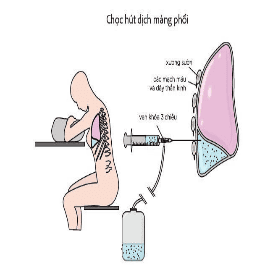
6. How to handle accidents
Anaphylaxis with local anesthetics: management of anaphylaxis regimens. Bleeding: due to puncture of the intercostal artery. Pain due to puncture of the intercostal nerve. Pneumothorax is caused by puncture of the lung by needle puncture, or it can be caused by air entering through the needle ramp. Need to get all the air out. Superinfection causes pleural effusion. Very sterile steps should be taken. Acute pulmonary edema: due to too fast and too much suction. Treat as for acute pulmonary edema. Aspiration does not produce fluid Vagal reflex Pneumothorax
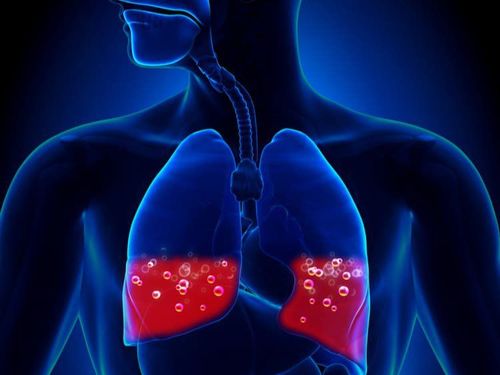
Some other complications such as: strong air blockage, wrongly poking the viscera may also occur. Therefore, patients need to follow the doctor's instructions to limit the risk of possible complications.
Vinmec International General Hospital is a high-quality medical facility in Vietnam with a team of highly qualified medical professionals, well-trained, domestic and foreign, and experienced.
A system of modern and advanced medical equipment, possessing many of the best machines in the world, helping to detect many difficult and dangerous diseases in a short time, supporting the diagnosis and treatment of doctors the most effective. The hospital space is designed according to 5-star hotel standards, giving patients comfort, friendliness and peace of mind.
Please dial HOTLINE for more information or register for an appointment HERE. Download MyVinmec app to make appointments faster and to manage your bookings easily.
REFERENCE1. Temes RT. Thoracentesis. N Engl J Med. 2007 Feb 8;356(6):641
2. Alexsander C.Chen, Thoracentesis, The Washington Manual of Critical Care, A Lippincott Manual 2012, pp. 605 – 609. 4





